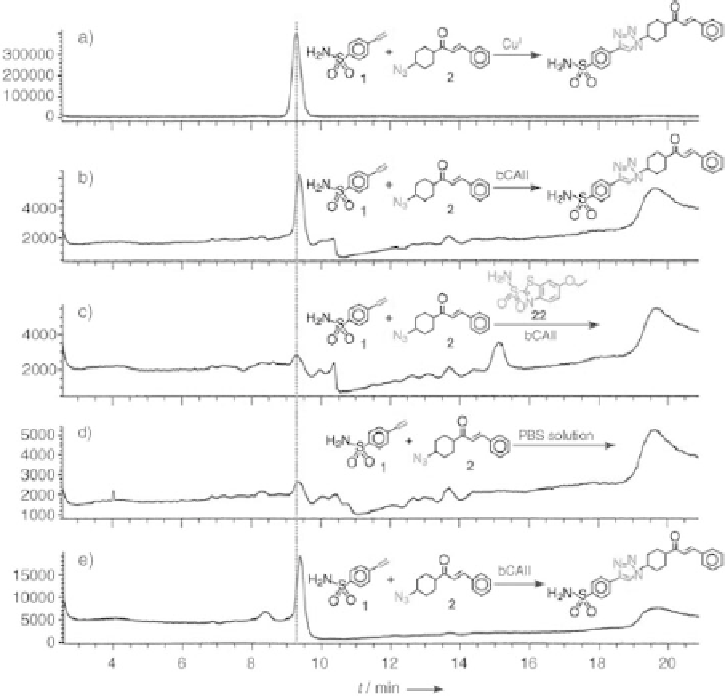Chemistry Reference
In-Depth Information
The
in situ
experimental protocol using the microfluidic device allowed parallel screen-
ing and controls for 10 azide-acetylene fragment combinations per batch. Each screening
campaign consisted of 32 individual reaction mixtures comprising the following format:
(i) acetylene
+
azide (
×
10, individually)
+
CA
(ii) acetylene
+
azide (
×
10, individually)
+
CA
+
CA inhibitor
(iii) acetylene
+
azide (
×
10, individually), no CA
(iv) CA only (
×
2).
Figure 7.18
Representative
in situ
Click chemistry reaction analysis by HPLC-SIM-MS; the
triazole product is indicated by the dashed line. (a) Triazole products obtained by conventional
synthesis with Cu(I) catalysis. (b)-(d) Microfuidic device reactions performed at 37
o
C for 40 h:
(b) in the presence of CA II, (c) in the presence of CA II and potent CA inhibitor to block the CA
active site and (d) in the absence of CA II. (e) Reaction performed at 37
o
C for 40 h in microtitre
plate. Reproducedwith permission fromWang, J., Sui, G., Mocharla,V.P., Lin, R.J., Phelps, M.E.,
Kolb, H.C. and Tseng, H.-R., Integrated microfluidics for parallel screening of an
in situ
click
chemistry library.
Angewandte Chemie International Edition
2006,
45
, 5276-5281. Copyright
Wiley-VCHVerlag GmbH.

